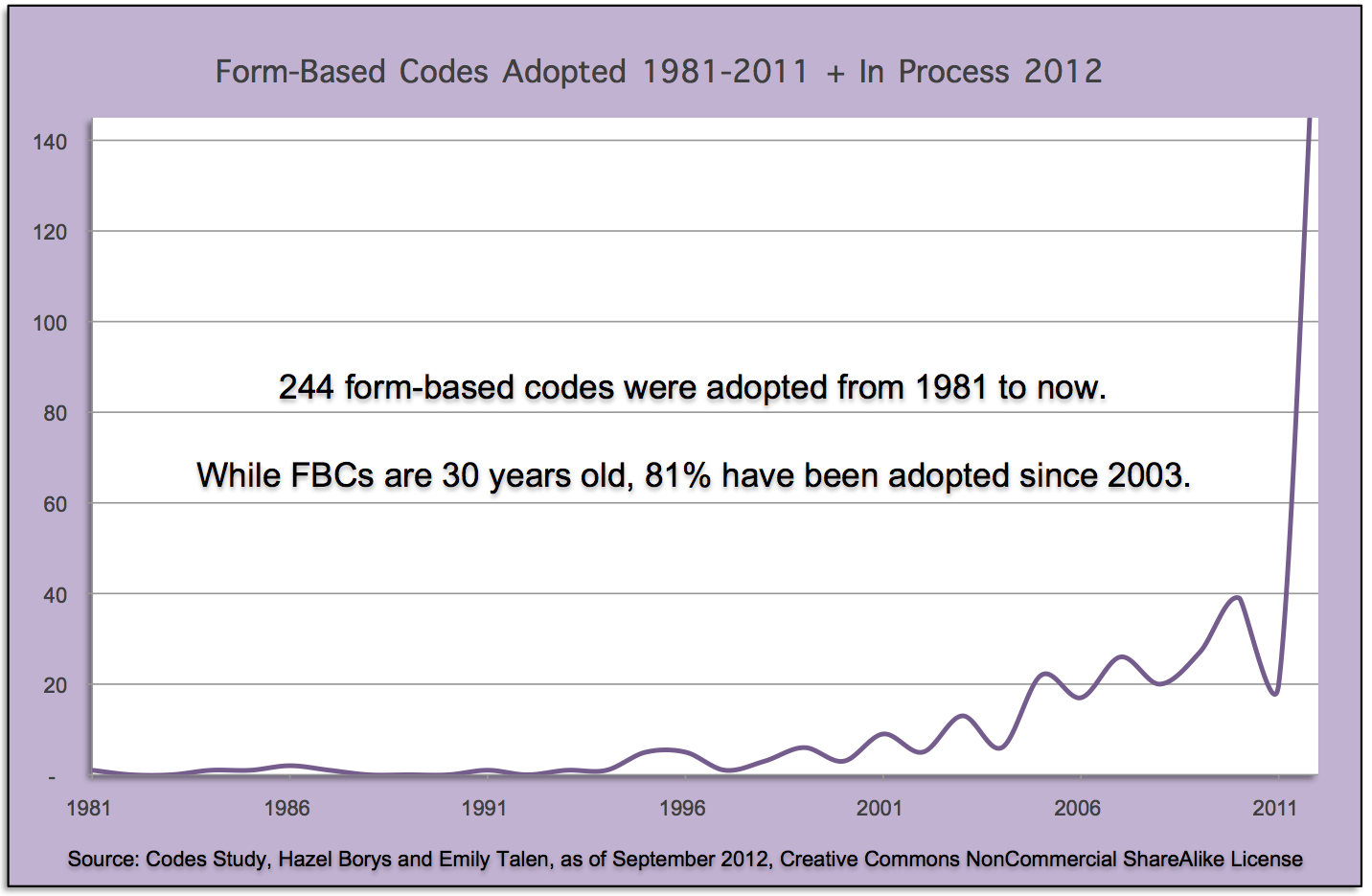A Placemaking Journal
Form-Based Codes? A picture’s worth a thousand words
 If the attendees list of Placemaking@Work, my monthly webinar series, is any indicator, we’re increasingly united in our desire to improve the places we call home, wherever those places might be. Over time, I’ve had participants from Hawaii to Russia, from British Columbia to Saudi Arabia, and many points in between.
If the attendees list of Placemaking@Work, my monthly webinar series, is any indicator, we’re increasingly united in our desire to improve the places we call home, wherever those places might be. Over time, I’ve had participants from Hawaii to Russia, from British Columbia to Saudi Arabia, and many points in between.
The common thread among these seekers is their search for tools and tactics that have proven effective. And increasingly dominating these conversations are form-based codes.
In preparation for a session on the form-based SmartCode, I started a #SmartCode tweetchat to get in the mood, and to engage the question I seem to receive at every dinner or party or event I attend: “Why form-based codes?”

It's not just people talking about form-based codes. It's an increasing number gettin' 'em done. Click for larger view.
The simple answer is that our passion is helping communities change their default setting of unconscious, opportunity-inhibiting design and, time and time again, it’s existing single-use zoning that stands in their way. In response, form-based codes have emerged as a useful remedy, effectively legalizing community visions worldwide and serving as a bridge between their current conditions and the goals they’re trying to reach.
So, that’s the why, but there’s still the question of what. What are form-based codes? And how do they work?
To easily illustrate these ideas – the work of a lot of people over time, including the Transect Codes Council and the Form-Based Codes Institute – I talked to my brother and fellow urbanist, Steve Mouzon, about using some of his photos. Here they are. And, assuming a picture truly is worth a thousand words, they’re sparing you a 10,000 word post. You’re welcome.
Above: A form-based code (FBC) is a blueprint for places where true community, in all its complexity, can prosper.
Above: To cities, planners, developers, and citizens, FBCs offer freedom of choice, quality of life, economic opportunity, environmental stewardship, and adaptability.
FBCs support community vision, local character, open lands conservation (as shown above), transit options, and walkable mixed-use neighborhoods.
Above: FBCs combat wasteful sprawl development, automobile-dominated streets, empty downtowns, and a hostile public realm.
Above: The SmartCode is a form-based, unified land development ordinance for planning and urban design. It assumes the role of what people typically call “zoning.”
Above: As a form-based code, it strongly addresses the physical form of buildings and development — their bulk and relationship to the street. Conversely, conventional zoning codes focus mostly on use and density.
Above: The SmartCode is transect-based, fostering communities with a continuous cross-section of habitats, from rural wilderness to urban city core.
The transect is divided into Transect Zones, each of complex character. This makes for diverse building types (as demonstrated above), thoroughfare types, and civic spaces.
Above: The six primary Transect Zones are T-1 Natural, T-2 Rural, T-3 Sub-Urban, T-4 General Urban, T-5 Urban Center, and T-6 Urban Core.
The SmartCode addresses development patterns at three scales of planning: Regional; Community; and, as shown above, Block and Building.
So, back to the original question of why form-based codes. Places, just like people, are dynamic, changing, growing, shrinking, refining, evolving. But the character of most places is unique, and challenged – rather than protected – by its current laws.
Just like a good friend helps you become more of who you really are, good development laws code for character. And that helps places grow in authentic patterns, building walkable community instead of placeless strips and pods for fast cars — the James Howard Kunstler Home from Nowhere sort of place.
A great form-based code extracts the DNA of a place and allows it. By right. And I don’t need a thousand words to say that making it easier for developers to build the things you want is smarter than making sprawl their path of least resistance.
Unless, of course, sprawl is what your community really wants.
–Hazel Borys
If PlaceShakers is our soapbox, our Facebook page is where we step down, grab a drink and enjoy a little conversation. Looking for a heads-up on the latest community-building news and perspective from around the web? Click through and “Like” us and we’ll keep you in the loop.












